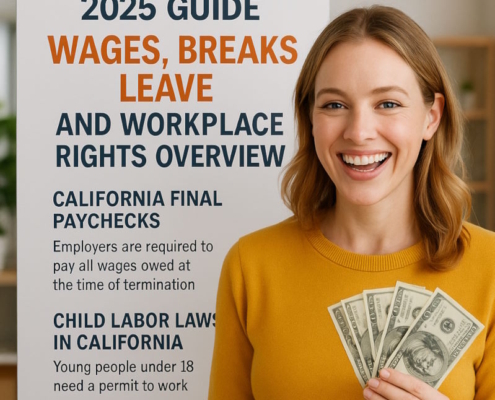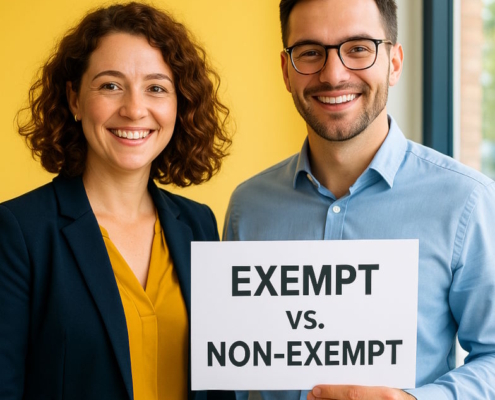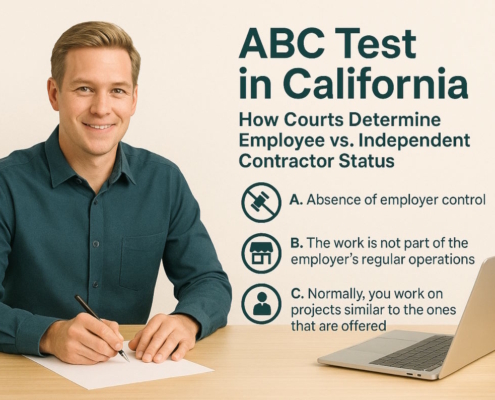How do you earn PTO in California?
In California, employers are not required by law to give their workers paid time off (PTO), whether it’s unpaid or paid. But if a company has a confirmed practice, policy, or agreement to offer PTO, then there are some limits on how that employer can meet its duty to offer time off pay. When you work, you earn PTO, which is also known as “vesting,” according to California law.
A worker who puts in six months’ worth of time will have accrued five days’ worth of PTO time if their annual PTO entitlement is two weeks (or ten work days). PTO pay is non-transferable and builds up as earned; it is not refundable in the event of dismissal from employment, for whatever cause.
According to the case of Suastez v. Plastic Dress Up (1982), an employer has the right to set a reasonable limit on PTO benefits so that employees cannot accrue more than a specific number of hours toward time off. The employee is entitled to receive all accrued and unpaid PTO days at their final pay rate upon termination of employment, unless otherwise stated in a collective bargaining agreement (Boothby v. Atlas Mechanical (1992). Section 227.3 of the Labor Code states that the Labor Commissioner is to follow the principles of justice and equity while deciding on PTO claims. The California Legislature developed this provision to guarantee that PTO plans would be handled fairly and equitably.
According to my company’s policy, new hires do not accrue PTO time for the first 6 months on the job. Does this follow the law?
Yes. The enforcement policy of DLSE does not prohibit employers from establishing an initial grace period during which employees are not eligible to receive PTO benefits. This may be applicable throughout an initial or probationary phase, or perhaps the entire first year on the job.
This kind of clause in a PTO plan will only be accepted, though, if it’s not a trick (a fake reason) and no time off is actually won or accumulated during the first year or some other time. For instance, the following elements would constitute blatant deceit and render the plan invalid:
Year 1: Zero PTO days
Year 2: Time off for four weeks
Year 3: Two weeks off
Looking at the two weeks of PTO earned in the third year with the four weeks earned in the second year makes it obvious that 2 of the 4 weeks of PTO gained in the second year are actually PTO earned in the first year.
The following is an example of a legitimate PTO plan:
Year 1: Zero PTO days
Year 2: Two weeks off
Year 3: Three weeks off
Years 4–10: Time off for four weeks
When a “waiting period” is discovered to be a deceitful practice, such as the first year in the examples given above, workers who quit their jobs during that time will be paid PTO pay at their final rate. If an employer’s PTO plan includes a legal “waiting period” clause, workers who quit within that time frame will not be paid for their vacation.
Who gets to earn PTO?
Earning PTO time in California is similar to earning income; it’s a perk of working. In some workplace PTO plans, employees can accrue time off based on the passing of each day, week, or pay cycle. If an employee works or receives full compensation for at least one day in a given week, the company’s policy may state that the worker will earn a certain percentage of their yearly PTO benefit for that week. For example, if a person works full-time, 8 hours per day, 40 hours a week and is entitled to two weeks of PTO every year, they will earn 1.538 hours of PTO for every week they work at least one full day. This is calculated by doing the following:
Ten workdays x eight hours a day = eighty hours of vacation time per year.
After dividing 80 hours of vacation time each year by 52 weeks, one can earn 1.538 hours of PTO each week.
Unlike PTO that can be earned, PTO for employees who are let go (due to resignation, discharge, death, contract termination, etc.) and have earned and accumulated PTO time that is not yet used must be prorated daily and paid at the final rate of pay that is in effect on the date of separation.
Consider the following scenario: an employee with a three-week annual vacation entitlement (fifteen work days allowance per year x eight hours/day = 120 hours PTO allowance per year), who leaves on August 7, 2003 (the 219th day of the year), has no PTO carry-over from previous years, and a final hourly rate of $13.00 would be owed $936.00 in PTO pay upon leaving. This calculation is shown below:
Pro rata daily basis:
August 7, 2003, was the last day of work, so 219 days divided by 365 days a year equals 60%.
Earned and accrued vacation time up to July 9, 2003 equals 72 hours, or 60% of the 120-hour entitlement.
2003 vacation days used = 0
Unused PTO time: 72 hours
72 hours x $13 per hour = $936.00 in PTO pay that is due upon separation.
Since I work part-time, my employer does not provide me with vacation benefits like they do for full-timers. Does this follow the law?
In a word, yes. Any clause in an employer’s PTO policy or plan that specifically names particular types of employees— temporary, part-time, probationary, casual, etc.—as being excluded from participation is enforceable and will prevail. The PTO policy or plan should make it very clear which employee classifications are not eligible for this benefit in order to prevent confusion.
According to my company’s policy, I will be required to pay back any unused portion of my yearly vacation benefit if I do not use it all before the end of the year. Does this follow the law?
That rule is not lawful, no. Accrued PTO pay is another type of compensation that “vests” (i.e., becomes yours) as time goes on in California. Consequently, the Labor Commissioner will not recognize a policy that stipulates the loss of unused vacation pay by a certain date (“use it or lose it”). This policy violates California law.
After an employee reaches two hundred hours of vacation, they are no longer allowed to earn (accrue) further vacation time until their balance drops below that amount, according to my employer’s vacation policy. Does this follow the law?
Indeed, the Labor Commissioner would find this clause acceptable. Policies that limit the amount of vacation time an employee can save are legal, as long as they do not impose a “use it or lose it” type of policy. Unlike a “use it or lose it” policy, which means that any vacation pay that has been accrued will be lost if not used, a “cap” policy just limits how much vacation can be earned.
This means that once a certain amount of PTO has been earned but not used, no more PTO or time off pay can be accrued until the balance drops below the cap. Vacation time frames should, of course, be realistic. The Labor Commissioner will not accept the policy if it is an attempt to deprive employees of PTO benefits through the use of a “cap.”
DLSE has determined time and time again that the Division will not enforce vacation policies that require all earned vacation to be taken in the same year or within a very limited period after the accrual period.
Will my boss be able to dictate when I get my vacation?
Your business has the right to handle its PTO pay duties in any way it sees fit, including setting limits on the amount and timing of holidays that employees can take.
My company’s vacation policy states that if I don’t take all of my PTO by year’s end, my boss will compensate me for the time I earned and accumulated but didn’t use. Does this follow the law?
To fulfill its vacation compensation obligations, your employer can, for example, pay you back each year for the vacation you earned and accrued but did not use that year.
“Paid time off” (PTO) is the new name for my company’s sick leave and vacation programs. This arrangement gives me a set amount of PTO days every year that I can use anyway I like. Can my employer use this to get out of legal obligations regarding vacation time?
No, your employer cannot get out of the law’s vacation requirements only because they have a “paid time off” (PTO) policy or plan. When a company does away with its own sick leave and vacation policies and instead offers workers a set amount of “paid days off” per year to use however they like, including sick and vacation leave, workers have the legal right to use these days off whenever they want.
Therefore, DLSE maintains that such a program must adhere to the same regulations as other vacation policies, in keeping with the principles of equity and justice. For instance, “paid time off” is accrued daily, vested PTO days cannot be lost, the total number of PTO days accrued and earned can be limited, and if an employee has PTO days that have not been used when their employment ends, they will be compensated for these days.
My company lets its workers take PTO before they have actually earned or accumulated it. I took all three weeks of my PTO last month before I had earned them. My employer withdrew all of my unused vacation time from my last paycheck when I left my job this month. Is it possible for him to do this?
“Advanced” PTO, defined as time off taken before it has been earned or accrued, cannot be withheld from your last payment by your employer. Many companies let workers use vacation days before they’ve earned them, due to work scheduling and employee preferences. Vacation benefits are considered compensation under California law, and it is considered an advance on wages when an employer lets workers take vacation before it’s earned or accrued.
Therefore, an employee owes their company money if they take vacation time in advance but then leave or are fired before using all of that time. This is called an overpayment of wages.
Multiple decisions from California courts have established that the attachment statute applies to advance pay in the same way it does to any other debt, whether to an employer or any other entity. The employer or any third party cannot collect the debt by withholding the employee’s final paycheck because doing so would go against the public policy reasons behind the wage exemption laws. These provide that wages are not subject to prejudgment attachment.
Therefore, in California, employers cannot take matters into their own hands to collect employee debts from their wages. This is because the wage garnishment law establishes the sole legal mechanism through which a judgment creditor may take action against a judgment debtor’s wages.
Am I able to keep the vacation time I’ve worked but not used in the event of my termination or resignation?
If an employee’s employment ends for any reason and they have unused vacation time, the employer is required by California law to pay them the full amount of their earned and accrued vacation days at their final rate of pay. This is unless a collective bargaining agreement states otherwise. Employees are required to get their paid vacation benefits in their final payment since these benefits are considered wages.
Unfortunately, I am unable to carry over any unused PTO from one year to the next at my workplace. Upon my discharge last week, I did not get a final payment that reflected any of these unused vacation days. How should I proceed?
You have two options for recouping your lost wages: either submit a wage claim to the Commissioner’s Office, which is part of the Division of Labor Standards Enforcement, or sue your employer in court. Labor Code Section 203 also says that you can file a claim for the waiting time penalty even if you no longer work for the company.
After I submit a wage claim, what happens next?
After you submit your claim to the local DLSE office, a Deputy Labor Commissioner will review it and decide how to move forward depending on the facts and circumstances. The first step in handling the claim is to decide whether to reject it, refer it to a hearing or conference, or both.
Everyone involved will get a letter with the conference’s location, time, and date if that’s the decision. The goal of the conference is to establish whether the claim has merit and to brainstorm potential alternatives to a hearing. If the issue remains unresolved after the conference, the following steps typically involve scheduling a hearing or dismissing the claim due to insufficient evidence.
All parties and witnesses are required to testify under oath during the hearing, which is also video recorded. The Labor Commissioner will serve the parties with an ODA (Order, Decision, or Award) following the hearing.
A civil court with the authority to hear appeals from either side can review the ODA. Once the court sets a trial date, all sides will have a chance to submit their case and witnesses. The court’s ruling will not be based on the evidence and testimony offered at the hearing before the Labor Commissioner. If an employer decides to appeal, DLSE may step in and represent an employee who can’t afford legal representation.
If I win the hearing but my employer still refuses to pay or even consider appealing the decision, award, or order, what can I do?
After an employee wins an Order, Decision, or Award (ODA) and the employer fails to pay it, the DLSE will ask the court to record the ODA as a judgment against the company. This happens when there is no room for appeal and the employer keeps avoiding payment. The court’s entry of this judgment has the same weight and impact as any other monetary judgment. Therefore, you have the option of trying to collect the judgment on your own or assigning it to DLSE.
What recourse do I have if my boss takes offense that I pointed out that PTO is considered wages in California and cannot be withheld?
If you feel that your employer is treating you unfairly or is trying to get back at you for doing something you said or did, such as firing you for challenging his decision to not allow accrued PTO to be carried over from year to year or for submitting a claim (or threat of a claim) to the Labor Commissioner, you have the right to file a discrimination or retaliation complaint with their office. You also have the option of taking legal action against your employer.































